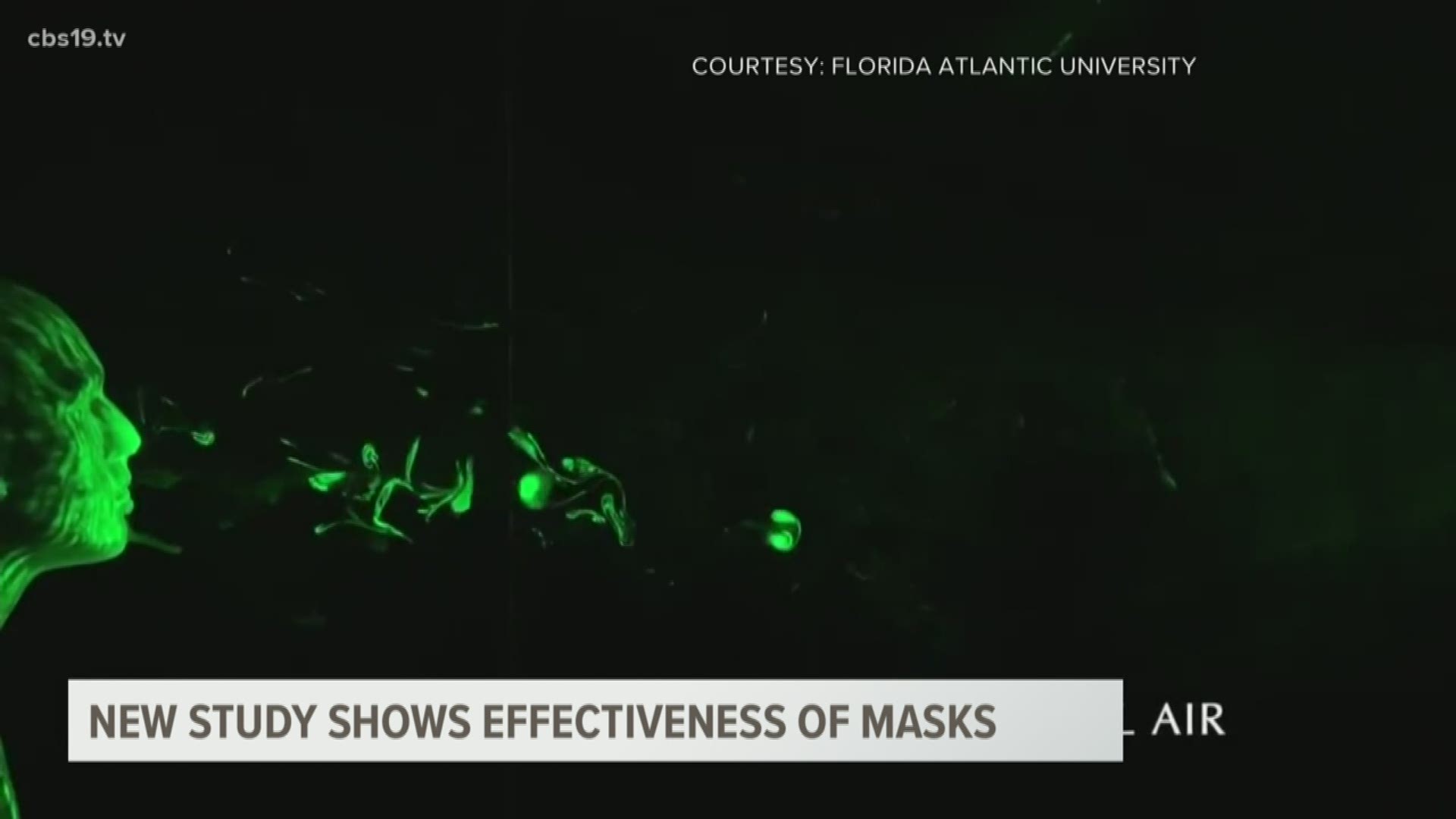TYLER, Texas — While more politicians ask people to wear masks, many skeptics refuse, claiming masks do not help stop the virus. So, a group of scientists created a new way to show everyone just how much certain types of masks can stop it.
The researchers from Florida Atlantic University rigged a mannequin with a pump, so it could expel water vapor the way people do when they cough. A green laser illuminates the water droplets as they stay in the air, representing the potential for infection from COVID-19.
"And it is stunning in how effective masks really are," said Russell Hopkins, director of public health emergency preparedness for the Northeast Texas Public Health District (NET Health).
Dr. Manhar Dhanak, one of the professors who led the project, said he was surprised to find out just how long microscopic water droplets can remain in the air to potentially spread COVID-19.
"From an unprotected cough, the droplets can travel far," he said, "and they can linger for minutes."
Without any restriction, the droplets can reach a distance of 12 feet in roughly a minute and a half, and farther given more time. The scientists tested a variety of masks that an average person might wear. Dhanak said a simple bandanna covering limits the distance water droplets can travel to three feet. A stitched, homemade cotton mask cut the distance down to a couple inches, and the professional masks available for purchase at most pharmacies also keep droplets from spreading beyond a foot.
"The stitched masks perform quite well in terms of not having anything leak through the mask when they cough," Dhanak stated.
Hopkins said NET Health staff report seeing more people wear masks when they make site visits around East Texas. Their use has become more accepted and promoted; Gov. Greg Abbott (R-Texas) and Vice President Mike Pence are among the political figures who recently decided to wear masks during public appearances.
"Public health has not done a great job at messaging this," Hopkins stated. "Initially, we said, 'don't wear a mask.' That was because we needed PPE in our hospitals. Now that they are readily available and that a cloth mask can substitute for, like, a procedure mask or an N95 respirator, now the message needs to be cleaned up and people need to understand that it is effective."
Hopkins said the number of cases of COVID-19 will keep going up in East Texas and around the state, and said the numbers will climb faster unless more people wear masks in public. "And that's what I fear," he added, "is that, without mask-wearing, we're going to go back to…it will be a self-imposed lockdown if we don't get a statewide order."
Dhanak said he believes the simplicity of the visualization has led the study to have a large impact in the days since its release. He believes it will lead to future research about the spread of coronavirus, as well as practical applications to keep people healthy. "As businesses start to open up," he explained, "designers are coming with ideas about new concepts for offices. If you have an open-plan office, they're thinking of where to put barriers."
Scientists have warned that wearing a mask will not prevent the user from getting infected; rather, it is most effective at preventing other people from getting infected if the wearer is sick.
Hopkins said Texans should assume that everyone is sick, in part because the percentage of tests coming back positive is so high, and in part because so many of the infected are asymptomatic. "It's up to 10 percent of the population who is infected will never show any symptoms," he stated.
Hopkins hopes these simulations will encourage people to spread awareness about masks instead of spreading the virus.

